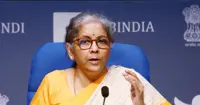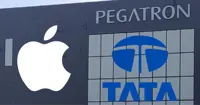Hyderabad Action Plan adopted by the ITU World Telecommunication Development Conference
04 Jun 2010
The concluding day of the fifth World Telecommunication Development Conference (WTDC-10), held from 24 May until 4 June, today adopted the Hyderabad Action Plan adopted today by the ITU World Telecommunication Development Conference.
the Hyderabad Action Plan outlines a road map to foster the global development of information and communication technology (ICT) networks and services over the next four-year cycle. The roll out of next-generation networks (NGN) and increased access to broadband services, wireless technologies and the internet were recognised as catalysts to achieve the broader development goals.
The Hyderabad Declaration states that broad access to telecommunications and ICTs is essential for the world's collective economic, social and cultural development, and the building of a global Information Society. This access brings new opportunities for interaction amongst people, for sharing of the world's knowledge resources and expertise, for transforming people's lives, and for contributing to the global development agenda.
The fifth WTDC was attended by 924 delegates, including 758 government delegates from 138 countries and 6 representatives from Palestine, 88 public and private sector representatives from 28 companies, 16 representing telecommunication-related entities from 7 countries and 56 representatives from 25 regional and international organisations.
P J Thomas, secretary, department of telecommunications, government of India and chairman of the conference said on the closing of the conference that the increasing role of ICT in the life of the common man could not be overemphasised and keeping in view the latest technological developments in ICT, the Hyderabad declaration adopted by WTDC-10 will play a decisive role in the development of the ICT sector across the world, especially in developing countries.
Policy-makers and regulators pledged to promote affordable access to telecommunications and ICTs aimed at fostering sustainable development worldwide, with attention given to least developed countries (LDCs) and countries with special needs. New opportunities arising from the widespread use of ICTs were also cited in improving e-government services such as healthcare and education and to step up the drive to alleviate poverty and create jobs, especially among poor and marginalized populations, including women, children, indigenous peoples and persons with disabilities.































